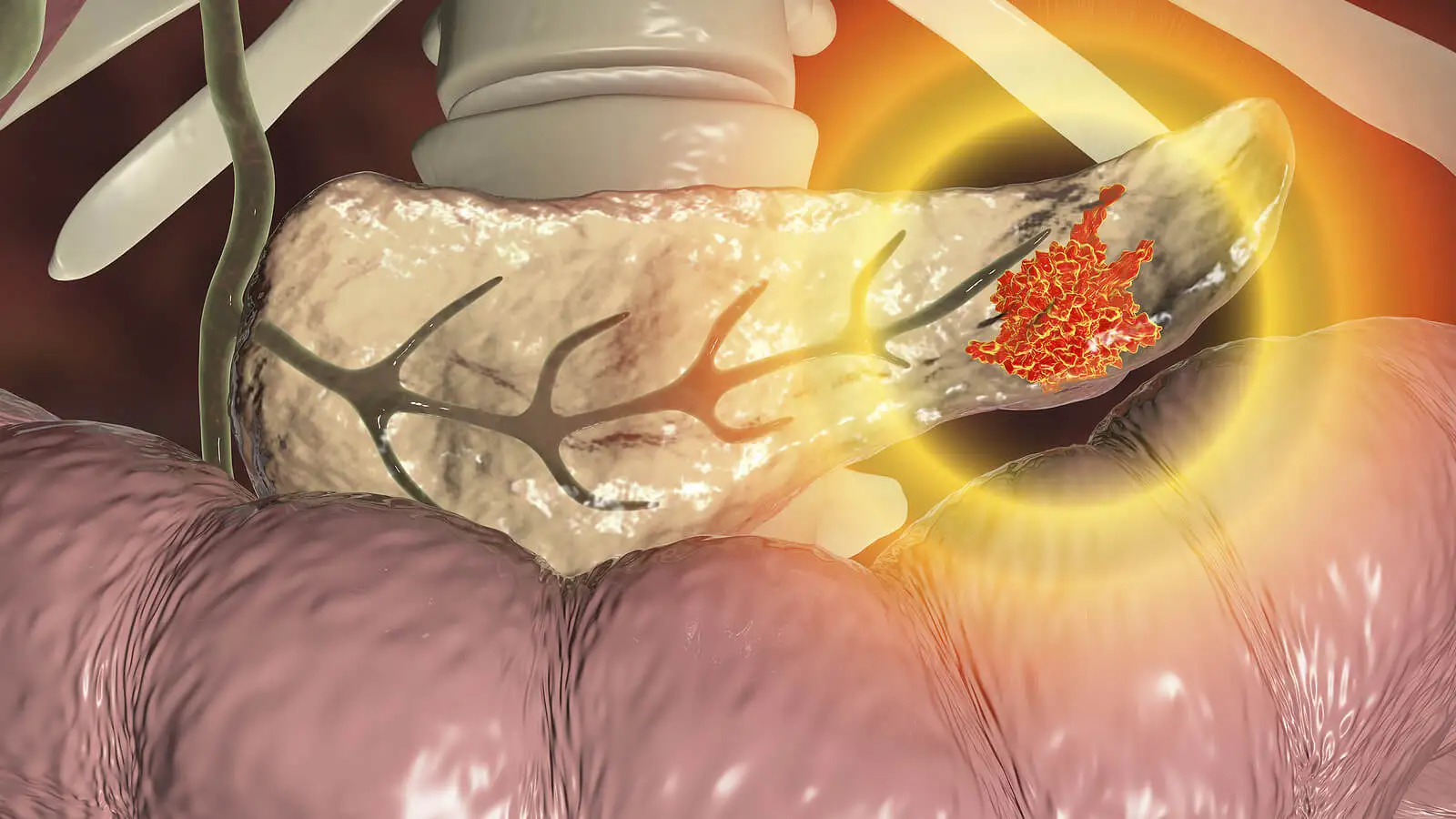Yellow Stools: What Are the Causes?


Written and verified by the doctor Mariel Mendoza
Yellow stools in adults often cause great concern. There are many different causes and, in general, it coincides with alterations in intestinal transit or absorption.
Although fat constitutes a part of the composition of human fecal matter, it shouldn’t in amounts that are able to stain it yellow. The presence of abundant fat in feces gives them bad odor, buoyancy, and a foaminess, in addition to this characteristic color.
The causes vary from those associated with diet, or episodes of stress, to pathologies that affect the functioning of the intestine, such as celiac disease. Liver diseases are also able to cause this symptom.
Causes of yellow stools
Let’s see the most frequent causes of why a person has yellow stools. Remember that it is best to consult a professional to look for the origin of the alteration if it doesn’t disappear in a short time.
1. Excessive consumption of fats
According to studies, the excretion of fat in the stool is less than 6 grams per day and remains constant even with an intake of 100 to 125 grams (4 to 5 oz) of fat per day.
A diet with a high consumption of fats, more than 125 grams (5 oz), could cause yellow stools, since the high concentration of lipids prevents proper digestion. In addition, this type of diet alters the absorption of nutrients and accelerates intestinal transit.
The more liquid consistency is due to the speed at which they transit through the intestinal loops. When evaluated microscopically, the presence of fat droplets accumulated in the stool can be seen. This condition is known as steatorrhea.
2. Stress
Stress acts directly on intestinal mast cells causing inflammation of the intestine and activation of the immune system. This fact promotes an inflammatory state in the intestinal mucosa.
Initially, there may be a decrease in stool consistency. Over time, the absorption of fats is impeded and stools may turn yellow.

3. Use of medications
Some drugs can cause yellow stools because they act by decreasing the absorption of fat at an intestinal level. One of them is orlistat, prescribed in obesity treatments.
Likewise, some antidiarrheal drugs, such as bismuth subsalicylate, can cause clear or grayish stools.
4. Celiac disease
Celiac disease is a product of severe gluten intolerance that causes intestinal inflammation and malabsorption. This occurs when foods containing this protein are consumed.
These foods include wheat, rye and barley. The intestinal malabsorption caused by inflammation prevents the absorption of nutrients and favors the onset of diarrhea.
Research states that in celiac disease, stools can be watery or semi-formed, light tan in color, similar to putty, or oily and foamy, with a characteristic unpleasant, rancid odor.
5. Irritable bowel syndrome (IBS)
In irritable bowel syndrome, diarrhea with yellow stools is due to alternating episodes of constipation with diarrhea due to accelerated intestinal transit and increased inflammatory activity. It is a chronic condition that is related to episodes of stress and its symptoms include abdominal pain, bloating, and gas.
6. Intestinal infections
In these cases, yellow stools are the result of inflammation in the intestinal walls preventing the absorption of fat. Intestinal infections can be bacterial, viral or parasitic. However, this phenomenon is especially associated with Escherichia coli and Giardia lamblia.
Find out more: Diet for Hereditary Fructose Intolerance and Fructose Malabsorption
Escherichia coli enteritis
This is a relatively frequent enteritis that causes inflammation of the small intestine by the bacterium Escherichia coli. It naturally inhabits the walls of the human intestines. However, some strains can cause food poisoning.
One type comes with the consumption of contaminated food that wasn’t properly washed and cooked. It usually manifests as traveler’s diarrhea.
Symptoms are as follows:
- Diarrhea with yellow stools, sometimes with mucus and blood
- Abdominal distention
- Loss of appetite
- Diffuse abdominal pain
- Abundant gas
- Fever
Giardiasis
Giardiasis is the inflammation of the small intestine caused by the invasion by Giardia lamblia. Like Escherichia coli enteritis, it is caused by the consumption of food or water contaminated with the parasite.
It manifests with yellow stools, explosive and very watery, foul-smelling diarrhea, intestinal cramps, nausea, loss of appetite, and weight loss.
7. Liver or gallbladder disorders
Liver diseases, such as hepatitis or cirrhosis, decrease the amount of bile that enters the intestine. It also happens with the presence of gallstones in the gallbladder or cholecystitis.
Bile is a substance produced in the gallbladder and released into the intestine to facilitate the digestion of fats by emulsifying them, according to studies. This is the key to the characteristic color of normal stools.
Reduced bile in the intestine causes a deficit in the digestion of fats, causing yellow, whitish, or pale stools. Other symptoms include abdominal pain, bloating, yellowing of the skin, and darkening of the urine.
Find out more here: 10 Symptoms that Can Alert You to a Gallbladder Problem
8. Problems in the pancreas
Here we will include the following scenarios:
- Chronic pancreatitis
- Cystic fibrosis
- Pancreatic cancer
- Blockage of the pancreatic duct
The pancreas is in charge of synthesizing pancreatic juice that includes enzymes, such as pancreatic lipase, which are released in the small intestine and which help to digest food. This is why the absence of pancreatic juice can cause yellow stools.
Other symptoms of pancreatic dysfunction are pain in the middle abdomen that extends in a band towards the back, weight loss, and altered sugar metabolism. In addition, changes in skin and mucosal coloration may be evident.
In chronic pancreatitis, steatorrhea is the second most common manifestation after pain, according to research. It is characterized by diarrheal, shiny, pasty, and very bulky stools.

Yellow stools in children
In children, yellow, brown and green tones are common and usual in stools. In spite of what many people believe, this isn’t a cause for concern.
In newborn babies, the presence of semi-solid stools of mustard yellow color is frequent in the first days of life. In general, they appear after the expulsion of green meconium, corresponding to the first stool of the newborn.
Studies (in Spanish) suggest that the ingestion of hypoallergenic formula milk can turn the stools a greenish-yellow color. These are usually a little more liquid than those mentioned above. Once the child begins to eat new foods, the stools will change in consistency and color.
When should you see a doctor for yellow stools?
Yellow stools are a far cry from the normal stool color. Therefore, they point to an alteration in the intestinal physiology.
The ideal thing is to always go to a doctor, especially if they don’t improve after 2 days. When there are associated signs, such as fever, colic, weight loss, abdominal distension or mucus and blood in the stool, immediate attention is required.
Diet is key
To prevent yellow stools, you should reduce the intake of fats and processed foods. In addition, drink plenty of water and consume easily digestible products, such as fruits, cooked white rice, fish, and white meats.
It should be noted that carrots, sweet potatoes, and turmeric also cause yellow stools.
All cited sources were thoroughly reviewed by our team to ensure their quality, reliability, currency, and validity. The bibliography of this article was considered reliable and of academic or scientific accuracy.
- Alonso, M. y García, R. (2006). Trastornos digestivos menores en el lactante. Protocolos digestivos. Bol Pediatr, 46 (2), 180-188. Disponible en: http://www.sccalp.org/boletin/46_supl2/BolPediatr2006_46_supl2_180-188.pdf
- Castro, I. y Martínez, M. (2013). Transportadores de lípidos biliares: una revisión actualizada. Gen, 67(1), 49-57. Disponible en: http://ve.scielo.org/scielo.php?script=sci_arttext&pid=S0016-35032013000100012
- Ganfornina, A. (2017). El estrés y el sistema digestivo [Tesis de grado, Universidad de Sevilla]. Depósito de Investigación Universidad de Sevilla. Disponible en: https://idus.us.es/handle/11441/64735#:~:text=As%C3%AD%2C%20el%20estr%C3%A9s%20altera%20funciones,y%20el%20sistema%20nervioso%20central.
- García, P. y López, G. (2007). Evaluación de la absorción y metabolismo intestinal. Nutrición Hospitalaria, 22(2), 5-13. http://scielo.isciii.es/scielo.php?script=sci_arttext&pid=S0212-16112007000500002&lng=es&tlng=es.
- Martín, T. y Marcos, E. (2009). Fórmulas lácteas especiales. Indicaciones. Farmacia Profesional, 23(2), 58-63. Disponible en: https://dialnet.unirioja.es/servlet/articulo?codigo=4583006
- Moreira, V. y López, A. (2006). Pancreatitis crónica. Revista Española de Enfermedades Digestivas, 98(5), 390. http://scielo.isciii.es/scielo.php?script=sci_arttext&pid=S1130-01082006000500010&lng=es&tlng=es.
- Moscoso, F. y Quera, R. (2015). Enfermedad celíaca: revisión. Revista Médica Clínica Las Condes, 26(5), 613-627. Disponible en: https://www.sciencedirect.com/science/article/pii/S0716864015001261?via%3Dihub
- Picco, M. (2022, October 8). Stool color: When to worry. Mayo Clinic. Consultado el 14 de febrero de 2023. Disponible en: https://www.mayoclinic.org/stool-color/expert-answers/faq-20058080
- Rodríguez, R. (2015). Vademécum Académico de Medicamentos. McGraw Hill. Disponible en: https://accessmedicina.mhmedical.com/content.aspx?bookid=1552§ionid=90367753
- Rivera, M., de la Parte, M., et al. (2002). Giardiasis intestinal. Mini-revisión. Investigación Clínica, 43(2), 119-128. Disponible en: http://ve.scielo.org/scielo.php?script=sci_arttext&pid=S0535-51332002000200007
- Sebastián, J. (2001). Enfermedad celíaca. Revisión. Farmacia Profesional, 15(8), 82-90. Disponible en: https://www.academia.edu/26851731/Enfermedad_cel%C3%ADaca_Revisi%C3%B3n
- York, S. (2018, September 17). Why Is My Stool Yellow? Healthline. Consultado el 14 de febrero de 2023. Disponible en: https://www.healthline.com/health/digestive-health/yellow-stool#:~:text=Stress,cause%20diarrhea%20and%20yellow%20stool.
This text is provided for informational purposes only and does not replace consultation with a professional. If in doubt, consult your specialist.








